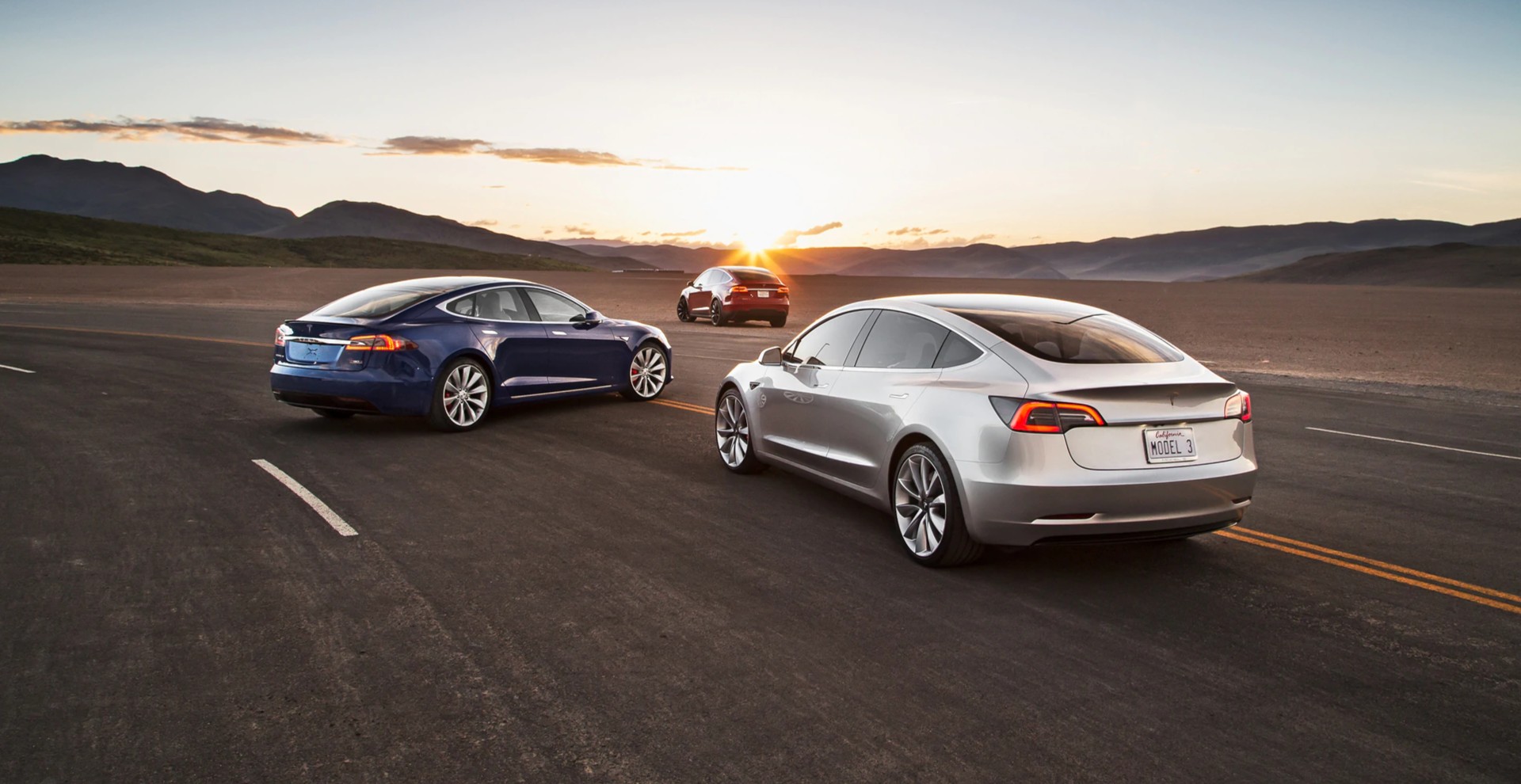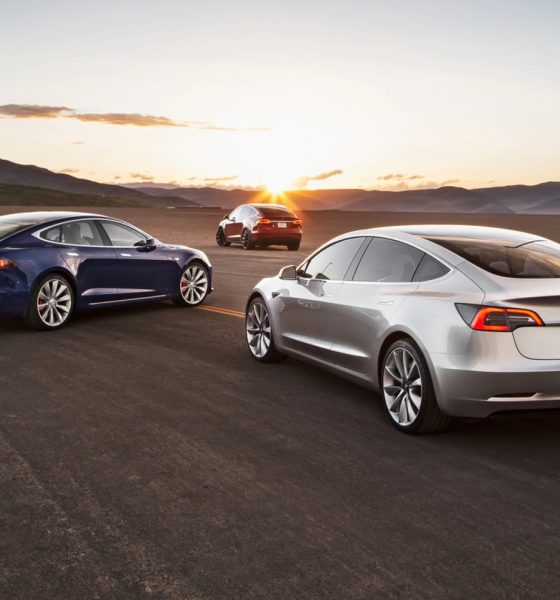

Investor's Corner
Tesla’s competitors are realizing that making good electric cars is not so easy
For years, Tesla (NASDAQ:TSLA) critics have argued that the electric car maker is nothing special, incompetent even, to the point where any other company, veteran or newcomer, could easily beat the Silicon Valley-based carmaker in their own game. Fast forward to November 2019, and it is starting to become evident that perhaps Tesla is not so easy to overtake after all.
Take NIO, for example, a company that is perceived as “China’s Tesla” several times in the past. Aggressive and ambitious, NIO was supported by TSLA critics as a rival that has the potential to beat the American electric car maker at its own game. Yet, inasmuch as the greater part of 2019 was cruel to Tesla, so was it difficult for NIO.
Over the past few months, NIO was hit by a perfect storm including a reduction of government subsidies, trade war uncertainties, and what appears to be decreasing demand in its home country. This has resulted in NIO cutting over 2,000 jobs to optimize its operations. Its shares, which are publicly traded just like TSLA stock, have also plummeted.
One could argue that NIO is encountering difficulties since it is still a young company. But even veteran automakers are also running into issues with their respective EV programs. Take the Volkswagen Group’s Audi, for example. The Audi e-tron is a well-reviewed premium electric vehicle with a price that is comparable to the Model X, but it features over 100 miles less range from a battery that is nearly as big as the pack in Tesla’s SUV. Audi’s recall of half of all e-trons sold since the vehicle was launched due to a fire risk further highlights the difficulty of the EV market.
Even Jaguar with the award-winning I-PACE was no exception. The I-PACE is quite the darling of the motoring industry, having swept over 60 awards since its release. Yet, even the stunningly-designed vehicle is seeing its sales decline, and owners are reporting issues such as less-than-expected range. Similar to the Audi e-tron, the I-PACE was also hit by a recall last June due to issues with its regenerative braking system, which could increase the risk of collisions.
Among the veterans, Porsche appears to be the one that is doing the best. The Taycan is well-received by both the pro and anti-Tesla community, but even the track-capable monster from Stuttgart struggles with range and its price. The Taycan is every bit the monster that the sports car maker promised, but the vehicle’s range falls far below the 310 miles that were expected years before its release. Its price has also ballooned, with a well-equipped Taycan Turbo S setting buyers back far above the $200,000 range.
The difficulty of the electric car industry could not be highlighted better than Dyson, a British company that made its mark through its innovative, premium fans and vacuum cleaners. Dyson attempted to enter the EV market, but after spending $1.3 billion, the company decided to abandon its efforts, deeming the initiative as commercially unviable.
Seeing all these challenges, one can almost see why Tesla CEO Elon Musk has described Tesla as an exercise in insanity. A company with nothing but a prototype sports car and an ambition to take on the auto industry in pre-2008 recession America, after all, could only be described as either courageous or absolutely crazy. Yet, beyond all the trials and tribulations, Tesla remains standing, and it is now positioned to lead in the EV market.
It took a lot of close calls, brushes with potential death, and Elon Musk’s self-inflicted wounds, but it is starting to become evident that maybe, just maybe, Tesla’s long-term bet is finally paying off. In the emerging EV era, it would be difficult to catch a company that has its own rapid charging network, battery technology, a habit of constant software upgrades, and an ecosystem of vehicles and energy products that highlight a key goal — to accelerate the world’s transition to sustainable energy.

Investor's Corner
Tesla stock closes at all-time high on heels of Robotaxi progress

Tesla stock (NASDAQ: TSLA) closed at an all-time high on Tuesday, jumping over 3 percent during the day and finishing at $489.88.
The price beats the previous record close, which was $479.86.
Shares have had a crazy year, dipping more than 40 percent from the start of the year. The stock then started to recover once again around late April, when its price started to climb back up from the low $200 level.
This week, Tesla started to climb toward its highest levels ever, as it was revealed on Sunday that the company was testing driverless Robotaxis in Austin. The spike in value pushed the company’s valuation to $1.63 trillion.
Tesla Robotaxi goes driverless as Musk confirms Safety Monitor removal testing
It is the seventh-most valuable company on the market currently, trailing Nvidia, Apple, Alphabet (Google), Microsoft, Amazon, and Meta.
Shares closed up $14.57 today, up over 3 percent.
The stock has gone through a lot this year, as previously mentioned. Shares tumbled in Q1 due to CEO Elon Musk’s involvement with the Department of Government Efficiency (DOGE), which pulled his attention away from his companies and left a major overhang on their valuations.
However, things started to rebound halfway through the year, and as the government started to phase out the $7,500 tax credit, demand spiked as consumers tried to take advantage of it.
Q3 deliveries were the highest in company history, and Tesla responded to the loss of the tax credit with the launch of the Model 3 and Model Y Standard.
Additionally, analysts have announced high expectations this week for the company on Wall Street as Robotaxi continues to be the focus. With autonomy within Tesla’s sights, things are moving in the direction of Robotaxi being a major catalyst for growth on the Street in the coming year.
Elon Musk
Tesla needs to come through on this one Robotaxi metric, analyst says
“We think the key focus from here will be how fast Tesla can scale driverless operations (including if Tesla’s approach to software/hardware allows it to scale significantly faster than competitors, as the company has argued), and on profitability.”

Tesla needs to come through on this one Robotaxi metric, Mark Delaney of Goldman Sachs says.
Tesla is in the process of rolling out its Robotaxi platform to areas outside of Austin and the California Bay Area. It has plans to launch in five additional cities, including Houston, Dallas, Miami, Las Vegas, and Phoenix.
However, the company’s expansion is not what the focus needs to be, according to Delaney. It’s the speed of deployment.
The analyst said:
“We think the key focus from here will be how fast Tesla can scale driverless operations (including if Tesla’s approach to software/hardware allows it to scale significantly faster than competitors, as the company has argued), and on profitability.”
Profitability will come as the Robotaxi fleet expands. Making that money will be dependent on when Tesla can initiate rides in more areas, giving more customers access to the program.
There are some additional things that the company needs to make happen ahead of the major Robotaxi expansion, one of those things is launching driverless rides in Austin, the first city in which it launched the program.
This week, Tesla started testing driverless Robotaxi rides in Austin, as two different Model Y units were spotted with no occupants, a huge step in the company’s plans for the ride-sharing platform.
Tesla Robotaxi goes driverless as Musk confirms Safety Monitor removal testing
CEO Elon Musk has been hoping to remove Safety Monitors from Robotaxis in Austin for several months, first mentioning the plan to have them out by the end of 2025 in September. He confirmed on Sunday that Tesla had officially removed vehicle occupants and started testing truly unsupervised rides.
Although Safety Monitors in Austin have been sitting in the passenger’s seat, they have still had the ability to override things in case of an emergency. After all, the ultimate goal was safety and avoiding any accidents or injuries.
Goldman Sachs reiterated its ‘Neutral’ rating and its $400 price target. Delaney said, “Tesla is making progress with its autonomous technology,” and recent developments make it evident that this is true.
Investor's Corner
Tesla gets bold Robotaxi prediction from Wall Street firm
Last week, Andrew Percoco took over Tesla analysis for Morgan Stanley from Adam Jonas, who covered the stock for years. Percoco seems to be less optimistic and bullish on Tesla shares, while still being fair and balanced in his analysis.

Tesla (NASDAQ: TSLA) received a bold Robotaxi prediction from Morgan Stanley, which anticipates a dramatic increase in the size of the company’s autonomous ride-hailing suite in the coming years.
Last week, Andrew Percoco took over Tesla analysis for Morgan Stanley from Adam Jonas, who covered the stock for years. Percoco seems to be less optimistic and bullish on Tesla shares, while still being fair and balanced in his analysis.
Percoco dug into the Robotaxi fleet and its expansion in the coming years in his latest note, released on Tuesday. The firm expects Tesla to increase the Robotaxi fleet size to 1,000 vehicles in 2026. However, that’s small-scale compared to what they expect from Tesla in a decade.
Tesla expands Robotaxi app access once again, this time on a global scale
By 2035, Morgan Stanley believes there will be one million Robotaxis on the road across multiple cities, a major jump and a considerable fleet size. We assume this means the fleet of vehicles Tesla will operate internally, and not including passenger-owned vehicles that could be added through software updates.
He also listed three specific catalysts that investors should pay attention to, as these will represent the company being on track to achieve its Robotaxi dreams:
- Opening Robotaxi to the public without a Safety Monitor. Timing is unclear, but it appears that Tesla is getting closer by the day.
- Improvement in safety metrics without the Safety Monitor. Tesla’s ability to improve its safety metrics as it scales miles driven without the Safety Monitor is imperative as it looks to scale in new states and cities in 2026.
- Cybercab start of production, targeted for April 2026. Tesla’s Cybercab is a purpose-built vehicle (no steering wheel or pedals, only two seats) that is expected to be produced through its state-of-the-art unboxed manufacturing process, offering further cost reductions and thus accelerating adoption over time.
Robotaxi stands to be one of Tesla’s most significant revenue contributors, especially as the company plans to continue expanding its ride-hailing service across the world in the coming years.
Its current deployment strategy is controlled and conservative to avoid any drastic and potentially program-ruining incidents.
So far, the program, which is active in Austin and the California Bay Area, has been widely successful.








